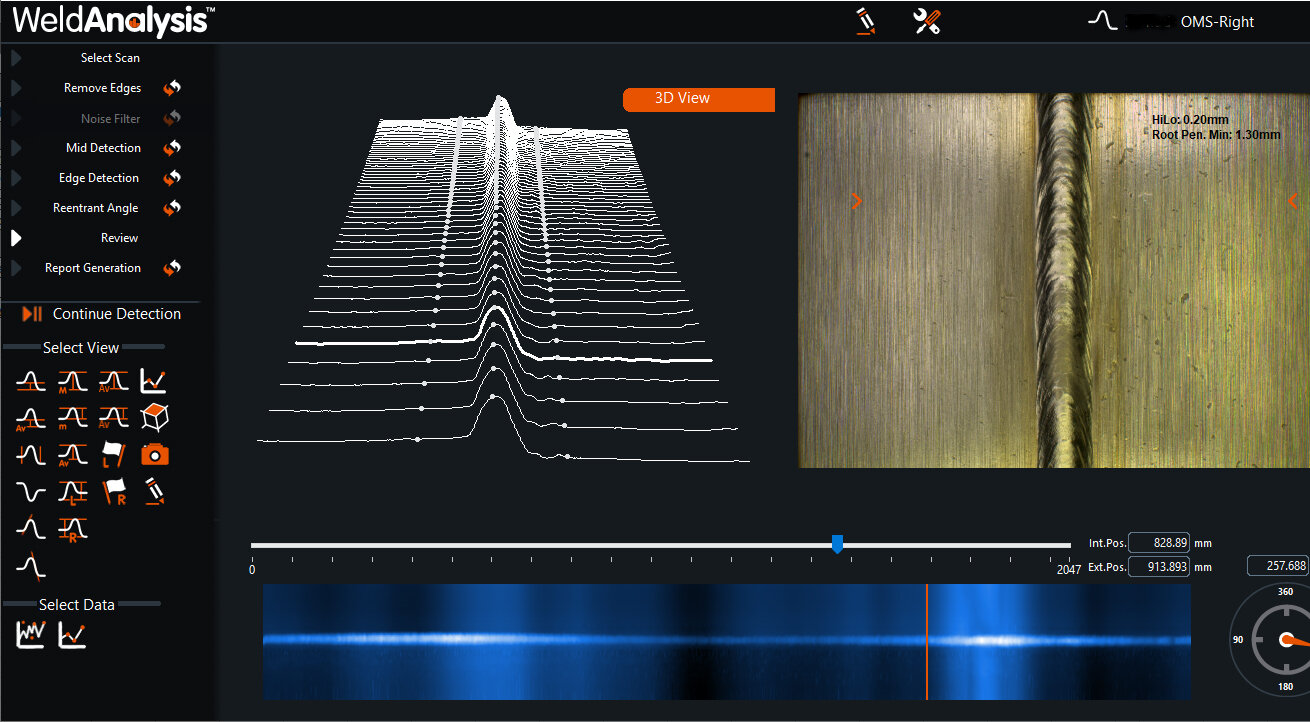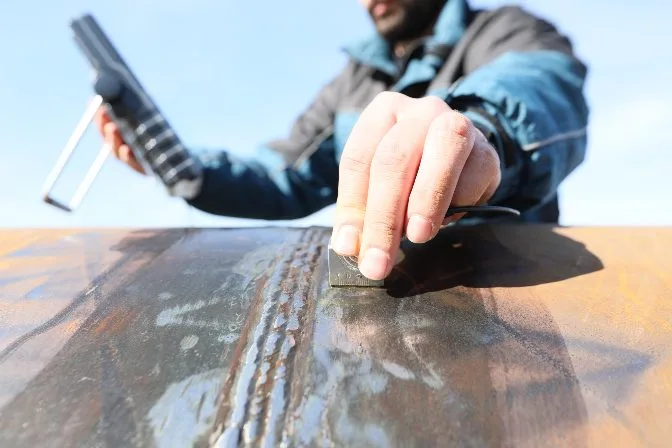Pipeline Welding Inspection: Essential Steps for Reliable Pipeline Building
Pipeline Welding Inspection: Essential Steps for Reliable Pipeline Building
Blog Article
Recognizing the Fundamentals of Pipeline Welding Assessment: Critical Variables for Assessing Weld High Quality and Averting Failures
In the world of pipe welding inspection, the stakes are indisputably high, requiring a comprehensive understanding of essential concepts to make certain weld quality and reduce failure dangers. Numerous crucial aspects come right into play, consisting of the option of ideal materials, the application of advanced inspection methods, and the acknowledgment of widespread welding defects. Additionally, adherence to regulative requirements plays an essential function in preserving system honesty. Yet, the intricacies integral in these procedures elevate vital inquiries concerning best practices and arising innovations that might redefine evaluation protocols-- questions that warrant more expedition.
Importance of Weld Top Quality
The integrity of a pipe is fundamentally dependent on the high quality of its welds, making weld quality a critical consider guaranteeing safe and effective operation. A pipeline weld works as a junction factor where materials are signed up with, and any shortages in this location can result in substantial structural weak points. Poor bonded quality can cause leaks, ruptures, and disastrous failures, presenting serious security threats and environmental dangers.
Numerous factors contribute to the high quality of a weld, consisting of the choice of welding process, the abilities of the welder, and the problems under which the welding is performed - Pipeline Welding Inspection. Insufficient prep work, incorrect warmth input, and contamination can compromise weld integrity, causing concerns such as porosity, insufficient fusion, or cracks. As a result, rigid quality assurance measures must be executed throughout the welding process to alleviate these threats
In addition, the lasting efficiency of a pipe is greatly affected by the resilience of its welds. Premium welds not only improve the general stamina of the pipeline but likewise extend its service life, decreasing the need for costly repair work and downtime. Thus, guaranteeing exceptional weld high quality is critical in pipeline design and upkeep techniques.
Secret Assessment Techniques
Guaranteeing weld quality demands the execution of reliable inspection strategies to determine prospective defects before they bring about failings. Pipeline Welding Inspection. Among one of the most extensively utilized methods are aesthetic assessment, radiographic testing (RT), ultrasonic screening (UT), and magnetic bit screening (MT) Each method is and offers an unique purpose picked based on the specific demands of the pipeline job
Visual examination is the very first line of protection, permitting inspectors to examine surface conditions, positioning, and general workmanship. It is a cost-effective and fast technique that can disclose evident flaws. Radiographic testing gives a comprehensive view of inner weld stability by utilizing X-rays or gamma rays to detect subsurface imperfections. This strategy is especially effective for determining gaps, cracks, and additions.
Ultrasonic testing uses high-frequency audio waves to review the density and stability of welds, making it excellent for spotting internal gaps. Magnetic bit testing is a trustworthy approach for recognizing surface area and near-surface issues on ferromagnetic products by using magnetic fields and fine ferrous particles. By utilizing these crucial inspection methods, pipe welding examiners can ensure the best criteria are kept, inevitably causing safer and more reliable pipe systems.
Typical Welding Defects
In the world of pipe welding, recognizing usual welding flaws is important for maintaining architectural integrity and safety and security. These flaws can result in disastrous failures otherwise determined and addressed immediately. Among one of the most prevalent issues are porosity, which happens when gas entraps in the weld steel, producing gaps that compromise the joint. An additional considerable concern is lack of blend, where the weld steel does not properly bond with the base product, compromising the joint's toughness.

Fractures are additionally an essential issue, materializing in numerous forms such as hot fractures, cool splits, and root cracks. Each type positions special obstacles and needs details inspection techniques for detection. Undercut is one more flaw that can minimize the weld's cross-sectional location, causing stress and anxiety concentration points, while slag addition happens when non-metallic material becomes caught in the weld pool, adversely affecting the mechanical properties of the weld.
In addition, inaccurate bead shape can bring about uneven tension circulation. Recognizing these common defects is vital for examiners and welders alike, as early discovery and improvement are crucial to ensuring the long life and integrity of pipeline systems.

Products and Their Influence
Picking the suitable products for pipe welding substantially affects the general performance and integrity of the bonded joints. The option get redirected here of base metals, filler products, and coverings plays an important role in determining the toughness, deterioration resistance, and toughness of the welds. For example, carbon steel is typically made use of for its balance of toughness and expense, however it might be prone to rust in certain settings, necessitating using safety finishings or corrosion-resistant alloys.
Moreover, dissimilar steel welding requires mindful consideration of thermal expansion properties and prospective galvanic corrosion. The compatibility of materials can greatly impact the microstructure of the weld, leading to variants in mechanical residential or commercial properties. For instance, stainless steel uses excellent rust resistance yet may call for specific filler materials to make certain a sound weld joint.
Additionally, the influence of temperature and ecological problems on product selection can not be undervalued. High-strength steels might lose ductility at elevated temperatures, while low-temperature applications could call for materials with improved durability. Eventually, recognizing the effects of material choices is essential for accomplishing optimum weld top quality and avoiding failings in pipe systems.

Regulatory Standards and Compliance
Regulatory standards and conformity play a crucial function in pipe welding, establishing the structure within which safe and efficient practices are preserved. These standards are developed by different companies, including the American Society of Mechanical Engineers (ASME), the American Welding Society (AWS), and the Pipeline and Hazardous Products Safety And Security Administration (PHMSA) Following these guidelines makes certain that welding treatments satisfy the required quality and security standards.
Conformity with regulatory requirements is crucial not only for making certain the integrity of the welds yet also for protecting the environment and public safety and security. Inspectors are tasked with verifying that welding procedures comply with these criteria through extensive exams of both the processes and the last welds. This involves assessing welder credentials, welding treatments, and the materials utilized.
Failing to follow recognized pop over here laws can result in substantial consequences, consisting of costly fixings, legal obligations, and devastating failings. As a result, organizations must integrate conformity right into their functional methods, cultivating a culture of safety and quality. Regular training and audits are essential components in preserving adherence to these regulatory requirements, guaranteeing that all employees are knowledgeable and furnished to promote the highest levels of pipe welding quality.
Verdict
In final thought, a thorough understanding of pipeline welding assessment is essential for ensuring weld high quality and stopping failures. By employing key evaluation strategies and identifying usual welding flaws, assessors can properly analyze the integrity of welds.
In the realm of pipe welding inspection, the stakes are unquestionably high, demanding an extensive understanding of basic click over here principles to guarantee weld quality and reduce failure dangers (Pipeline Welding Inspection).The integrity of a pipeline is basically dependent on the high quality of its welds, making weld high quality a critical variable in making certain secure and reliable procedure.Numerous aspects add to the high quality of a weld, including the selection of welding procedure, the skills of the welder, and the conditions under which the welding is executed. Undercut is one more issue that can decrease the weld's cross-sectional area, leading to tension focus factors, while slag inclusion happens when non-metallic product comes to be entraped in the weld pool, adversely impacting the mechanical homes of the weld
In final thought, a thorough understanding of pipe welding examination is vital for making sure weld quality and preventing failures.
Report this page